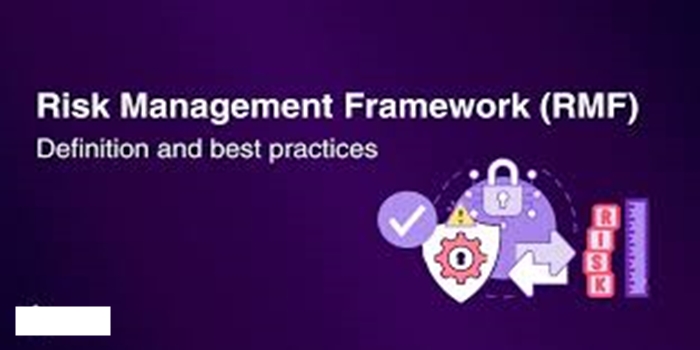In this article, we discussed the meaning of risk management framework, the examples, the steps, the components, and the benefits.
Definition
The Risk Management Framework is a pattern and guideline used by companies to identify, remove and minimize risks. It was originally developed by the National Institute of Standards and Technology to help protect the information systems of the United States government.
Examples of risk management frameworks include.
NIST Cybersecurity Framework (CSF)
A flexible set of guidelines for US businesses to reduce cybersecurity risk
Based on existing policies, standards, and practices
COSO ERM Framework
A comprehensive approach to risk management with eight components
Includes control environment, risk assessment, and monitoring activities
COBIT Risk Management Framework
A set of best practices and guidelines to align IT goals with business objectives
Focuses on managing IT to minimize IT-related risks
Risk management framework (RMF)
A strategy for responding to, mitigating, and preventing risks
Can be used by businesses and investors
Risk management planning
Helps establish a common understanding of key parameters, management’s risk tolerance, and how to document and report results
Risk management process
Typically includes identifying, assessing, measuring, mitigating, monitoring, and reporting risks.
The Components of the RMF
Measurement and assessment
The goal behind the measurement and assessment component is to create a risk profile for each risk that has been identified. There are any number of different ways that organizations might complete the measurement and assessment phase of the process. In some cases, risk measurement might be based on something as simple as how much capital could potentially be lost as a result of the risk. However, in other cases, measuring the potential impact of a risk might be far more difficult.
Mitigation
Risk mitigation involves examining the risks that have been known and determining which risks can and should be removed, as opposed to the risks that are deemed to be acceptable.
Reporting and monitoring
The fourth component in the process is risk reporting and monitoring. This essentially means regularly reexamining the risks in order to make sure that the risk mitigation strategies the organization has adopted are leading to the desired effect.
Governance
The last component in the process is risk governance. Risk governance is the process of making sure that the risk mitigation techniques that have been adopted are put into place and that the employees adhere to those policies.
The steps of the Risk Management Framework
Prepare
The preparation stage of the RMF focuses on getting the organization ready to adopt a formalized risk management strategy. This might include identifying organizational risks and determining key risk-management roles.
Categorize
The categorize stage is where organizations begin assessing the risks that have been identified. This can mean assessing the impact of the various risks and prioritizing the risks that need to be addressed.
Select
The select stage involves choosing the controls that will be used to protect affected systems to minimize or mitigate the risks that have been identified. These controls will vary widely from one system to the next. They might include anything from adopting monitoring solutions to shaping policies that will help to alleviate concerns.
Implement
Once an organization has selected the controls it will adopt as part of its risk mitigation strategy, the next stage is implementation. This is where the selected controls are put into place in an effort to head off risks that might exist.
Assess
The assess stage comes after the implementation of any selected controls. It seeks to determine whether the selected controls were implemented correctly and if those controls are delivering the desired result. This means making sure any mechanisms that have been implemented are reducing risks in a quantifiable way without accidentally introducing new risks in the process.
Monitor
The monitor phase is designed to provide situational awareness on an ongoing basis. Organizations should continuously evaluate their risk mitigation strategies to ensure they continue to work as intended.
Benefits of a risk management framework:
Systematic Risk Identification:
Allows for a comprehensive process to identify potential risks across all aspects of an organization, including financial, operational, legal, and strategic risks, which helps to prevent overlooking critical issues.
Proactive Risk Assessment:
Enables a structured evaluation of the likelihood and potential impact of identified risks, allowing for targeted risk mitigation strategies.
Improved Decision-Making:
By providing a clear understanding of risks, the framework facilitates informed decision-making at all levels of the organization.
Enhanced Resilience:
By proactively addressing potential risks, organizations become better prepared to manage and recover from adverse events.
Cost Reduction:
Early identification and mitigation of risks can help prevent costly incidents and damages.
Compliance with Regulations:
Many industries have regulatory requirements regarding risk management, which a framework can help organizations adhere to.
Improved Communication and Collaboration:
A structured framework promotes clear communication about risks across different departments and levels within the organization.
Continuous Improvement:
The framework provides a mechanism to regularly review and update risk assessments as conditions change, ensuring ongoing risk management effectiveness.
Conclusion
A risk management framework (RMF) is a structured system that guides organizations in identifying, assessing, prioritizing, and justifying potential risks that could impact their operations, allowing them to make informed decisions by understanding and managing potential threats across various areas of the business, including financial, legal, operational, and reputational risks; essentially acting as a blueprint for proactive risk management.
READ: Crisis Management in Brand Reputation


